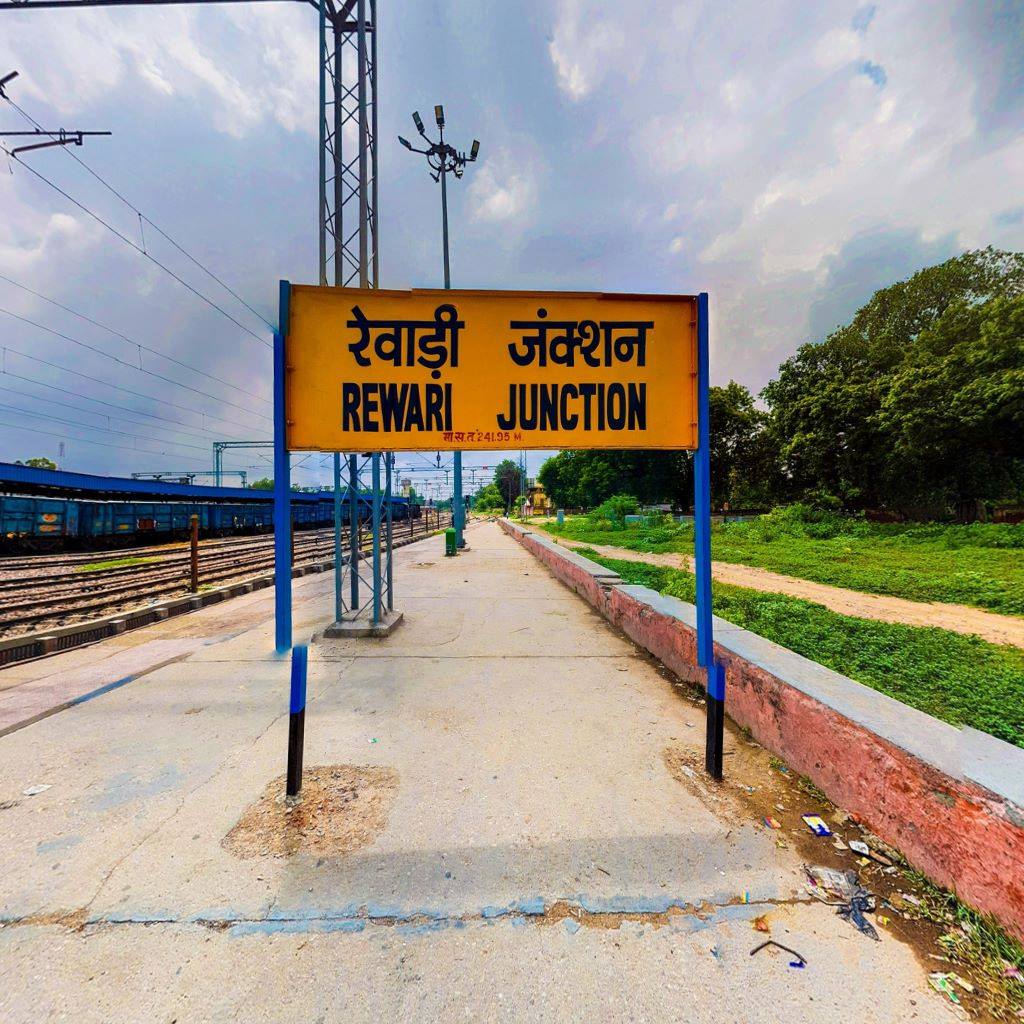What Is the History of Insurance?
बीमा का इतिहास कà¥à¤¯à¤¾ है?
If risk is like a smoldering coal that may spark a fire at any moment, insurance is civilization's fire extinguisher. The main concept of insurance—that of spreading risk among many—is as old as human existence. Whether it was hunting giant elk in a group to spread the risk of being the one gored to death or shipping cargo in several different caravans to avoid losing the whole shipment to a marauding tribe, people have always been wary of risk. Countries and their citizens need to spread risk among large numbers of people and to move risk to entities that can handle it. This is how insurance emerged.
यदि जोखिम सà¥à¤²à¤—ते कोयले की तरह है जो किसी à¤à¥€ कà¥à¤·à¤£ आग लगा सकता है, तो बीमा सà¤à¥à¤¯à¤¤à¤¾ का अगà¥à¤¨à¤¿à¤¶à¤¾à¤®à¤• है। बीमा की मà¥à¤–à¥à¤¯ अवधारणा—कई लोगों के बीच जोखिम फैलाने की— उतनी ही पà¥à¤°à¤¾à¤¨à¥€ है जितनी कि मानव असà¥à¤¤à¤¿à¤¤à¥à¤µà¥¤ चाहे वह à¤à¤• समूह में विशाल à¤à¤²à¥à¤• का शिकार कर रहा हो, मौत के जोखिम को फैलाने के लिठया कई अलग-अलग कारवां में कारà¥à¤—ो शिपिंग करने के लिठà¤à¤• लà¥à¤Ÿà¥‡à¤°à¤¾ जनजाति को पूरा शिपमेंट खोने से बचने के लिà¤, लोग हमेशा जोखिम से सावधान रहे हैं। देशों और उनके नागरिकों को बड़ी संखà¥à¤¯à¤¾ में लोगों के बीच जोखिम फैलाने और उन संसà¥à¤¥à¤¾à¤“ं को जोखिम सà¥à¤¥à¤¾à¤¨à¤¾à¤‚तरित करने की आवशà¥à¤¯à¤•à¤¤à¤¾ है जो इसे संà¤à¤¾à¤² सकते हैं। इस तरह बीमा का उदय हà¥à¤†à¥¤
King Hammurabi's Code and Early Insurance ( राजा हमà¥à¤®à¥à¤°à¤¾à¤¬à¥€ की संहिता और पà¥à¤°à¤¾à¤°à¤‚à¤à¤¿à¤• बीमा)
By some accounts, the earliest written insurance policy appeared in ancient times on a Babylonian monument with the code of King Hammurabi carved into it. Hammurabi's Code was one of the first examples of written laws.
These ancient laws were extreme in most respects, but one offered basic insurance in that a debtor didn't have to pay back their loans if some personal catastrophe made it impossible (disability, death, flooding, etc.)
कà¥à¤› खातों के अनà¥à¤¸à¤¾à¤°, पà¥à¤°à¤¾à¤šà¥€à¤¨ काल में सबसे पà¥à¤°à¤¾à¤¨à¥€ लिखित बीमा पॉलिसी बेबीलोन के सà¥à¤®à¤¾à¤°à¤• पर दिखाई देती थी, जिस पर राजा हमà¥à¤®à¥à¤°à¤¾à¤¬à¥€ का कोड खà¥à¤¦à¤¾ हà¥à¤† था। हमà¥à¤®à¥à¤°à¤¾à¤¬à¥€ की संहिता लिखित कानूनों के पहले उदाहरणों में से à¤à¤• थी।
ये पà¥à¤°à¤¾à¤šà¥€à¤¨ कानून जà¥à¤¯à¤¾à¤¦à¤¾à¤¤à¤° मामलों में चरम थे, लेकिन à¤à¤• ने बà¥à¤¨à¤¿à¤¯à¤¾à¤¦à¥€ बीमा की पेशकश की जिसमें à¤à¤• देनदार को अपने ऋण का à¤à¥à¤—तान नहीं करना पड़ता था अगर कà¥à¤› वà¥à¤¯à¤•à¥à¤¤à¤¿à¤—त आपदा ने इसे असंà¤à¤µ बना दिया (विकलांगता, मृतà¥à¤¯à¥, बाढ़, आदि)
Medieval Guilds Provided Group Coverage (मधà¥à¤¯à¤•à¤¾à¤²à¥€à¤¨ गिलà¥à¤¡ समूह कवरेज पà¥à¤°à¤¦à¤¾à¤¨ करते हैं )
In the Middle Ages, most craftsmen were trained through the guild system. Apprentices spent their childhoods working for masters for little or no pay. Once they became masters themselves, they paid dues to the guild and trained their own apprentices.
The wealthier guilds had large coffers that acted as a type of insurance fund.1 If a master's practice burned down—a common occurrence in the largely wooden cities of medieval Europe—the guild would rebuild it using money from its own funds. If a master was robbed, the guild would cover their obligations until money started to flow in again. If a master was suddenly disabled or killed, the guild would support them or their surviving family.
This safety net encouraged more people to leave farming to take up trades. As a result, the amount of goods available for trade increased, as did the range of goods and services. The basic style of insurance used by guilds is still around today in the form of group coverage.
मधà¥à¤¯ यà¥à¤— में, अधिकांश शिलà¥à¤ªà¤•à¤¾à¤°à¥‹à¤‚ को गिलà¥à¤¡ पà¥à¤°à¤£à¤¾à¤²à¥€ के माधà¥à¤¯à¤® से पà¥à¤°à¤¶à¤¿à¤•à¥à¤·à¤¿à¤¤ किया जाता था। पà¥à¤°à¤¶à¤¿à¤•à¥à¤·à¥à¤“ं ने अपना बचपन बहà¥à¤¤ कम या बिना वेतन के सà¥à¤µà¤¾à¤®à¥€ के लिठकाम करते हà¥à¤ बिताया। à¤à¤• बार जब वे सà¥à¤µà¤¯à¤‚ सà¥à¤µà¤¾à¤®à¥€ बन गà¤, तो उनà¥à¤¹à¥‹à¤‚ने गिलà¥à¤¡ को देय राशि का à¤à¥à¤—तान किया और अपने सà¥à¤µà¤¯à¤‚ के पà¥à¤°à¤¶à¤¿à¤•à¥à¤·à¥à¤“ं को पà¥à¤°à¤¶à¤¿à¤•à¥à¤·à¤¿à¤¤ किया।
अमीर गिलà¥à¤¡à¥‹à¤‚ के पास बड़े खजाने थे जो à¤à¤• पà¥à¤°à¤•à¤¾à¤° के बीमा कोष के रूप में काम करते थे। यदि à¤à¤• मासà¥à¤Ÿà¤° का अà¤à¥à¤¯à¤¾à¤¸ जल गया - मधà¥à¤¯à¤¯à¥à¤—ीन यूरोप के बड़े पैमाने पर लकड़ी के शहरों में à¤à¤• सामानà¥à¤¯ घटना - गिलà¥à¤¡ अपने सà¥à¤µà¤¯à¤‚ के धन से धन का उपयोग करके इसका पà¥à¤¨à¤°à¥à¤¨à¤¿à¤°à¥à¤®à¤¾à¤£ करेगा। यदि à¤à¤• मालिक को लूट लिया गया था, तो गिलà¥à¤¡ अपने दायितà¥à¤µà¥‹à¤‚ को तब तक पूरा करेगा जब तक कि पैसा फिर से पà¥à¤°à¤µà¤¾à¤¹à¤¿à¤¤ न होने लगे। अगर कोई मालिक अचानक विकलांग या मार डाला गया था, तो गिलà¥à¤¡ उनà¥à¤¹à¥‡à¤‚ या उनके जीवित परिवार का समरà¥à¤¥à¤¨ करेगा।
इस सà¥à¤°à¤•à¥à¤·à¤¾ जाल ने अधिक लोगों को वà¥à¤¯à¤¾à¤ªà¤¾à¤° करने के लिठखेती छोड़ने के लिठपà¥à¤°à¥‹à¤¤à¥à¤¸à¤¾à¤¹à¤¿à¤¤ किया। परिणामसà¥à¤µà¤°à¥‚प, वà¥à¤¯à¤¾à¤ªà¤¾à¤° के लिठउपलबà¥à¤§ वसà¥à¤¤à¥à¤“ं की मातà¥à¤°à¤¾ में वृदà¥à¤§à¤¿ हà¥à¤ˆ, जैसा कि वसà¥à¤¤à¥à¤“ं और सेवाओं की शà¥à¤°à¥‡à¤£à¥€ में हà¥à¤†à¥¤ समूह कवरेज के रूप में गिलà¥à¤¡ दà¥à¤µà¤¾à¤°à¤¾ उपयोग की जाने वाली बीमा की मूल शैली आज à¤à¥€ मौजूद है।
Spreading Risk in Dangerous Waters (खतरनाक पानी में फैलने का खतरा)
In the late 1600s, shipping was just beginning between the New World and the Old, as colonies were being established and exotic goods were ferried back. The practice of underwriting emerged in the same London coffeehouses that operated as the unofficial stock exchange for the British Empire. A coffeehouse owned by Edward Lloyd, later of Lloyd's of London, was the primary meeting place for merchants, ship owners, and others seeking insurance.
A basic system for funding voyages to the New World was established. In the first stage, merchants and companies would seek funding from the venture capitalists of the day. They, in turn, would help find people who wanted to be colonists, usually those from the more desperate areas of London, and would purchase provisions for the voyage.
In exchange, the venture capitalists were guaranteed some of the returns from the goods the colonists would produce or find in the Americas. It was widely believed you couldn't take two left turns in America without finding a deposit of gold or other precious metals. When it turned out this wasn't exactly true, venture capitalists still funded voyages for a share of the new bumper crop: tobacco.
After a voyage was secured by venture capitalists, the merchants and ship owners went to Lloyd's to hand over a copy of the ship's cargo manifest so the investors and underwriters who gathered there could read it. Those who were interested in taking on the risk signed at the bottom of the manifest beneath the figure indicating the share of the cargo for which they were taking responsibility (hence, underwriting). In this way, a single voyage would have multiple underwriters, who tried to spread their own risk by taking shares in several different voyages.
By 1654, Blaise Pascal, the Frenchman who gave us the first calculator, and his countryman Pierre de Fermat, discovered a way to express probabilities and better understand levels of risk. That breakthrough began to formalize the practice of underwriting and made insurance more affordable.
1600 के दशक के अंत में, नई दà¥à¤¨à¤¿à¤¯à¤¾ और पà¥à¤°à¤¾à¤¨à¥‡ के बीच शिपिंग शà¥à¤°à¥‚ हो रही थी, कà¥à¤¯à¥‹à¤‚कि उपनिवेश सà¥à¤¥à¤¾à¤ªà¤¿à¤¤ किठजा रहे थे और विदेशी सामान वापस ले जाया गया था। अंडरराइटिंग की पà¥à¤°à¤¥à¤¾ उसी लंदन कॉफ़ीहाउस में उà¤à¤°à¥€ जो बà¥à¤°à¤¿à¤Ÿà¤¿à¤¶ सामà¥à¤°à¤¾à¤œà¥à¤¯ के लिठअनौपचारिक सà¥à¤Ÿà¥‰à¤• à¤à¤•à¥à¤¸à¤šà¥‡à¤‚ज के रूप में काम करती थी। à¤à¤¡à¤µà¤°à¥à¤¡ लॉयड के सà¥à¤µà¤¾à¤®à¤¿à¤¤à¥à¤µ वाला à¤à¤• कॉफ़ीहाउस, जो बाद में लंदन के लॉयडà¥à¤¸ का था, वà¥à¤¯à¤¾à¤ªà¤¾à¤°à¤¿à¤¯à¥‹à¤‚, जहाज मालिकों और अनà¥à¤¯ लोगों के लिठबैठक की पà¥à¤°à¤¾à¤¥à¤®à¤¿à¤• जगह थी। बीमा।
नई दà¥à¤¨à¤¿à¤¯à¤¾ के लिठयातà¥à¤°à¤¾à¤“ं के वितà¥à¤¤à¤ªà¥‹à¤·à¤£ के लिठà¤à¤• बà¥à¤¨à¤¿à¤¯à¤¾à¤¦à¥€ पà¥à¤°à¤£à¤¾à¤²à¥€ सà¥à¤¥à¤¾à¤ªà¤¿à¤¤ की गई थी। पहले चरण में, वà¥à¤¯à¤¾à¤ªà¤¾à¤°à¥€ और कंपनियां उस समय के उदà¥à¤¯à¤® पूंजीपतियों से धन की मांग करेंगी। वे, बदले में, उन लोगों को खोजने में मदद करेंगे जो उपनिवेशवादी बनना चाहते थे, आमतौर पर वे जो लंदन के अधिक हताश कà¥à¤·à¥‡à¤¤à¥à¤°à¥‹à¤‚ से थे, और यातà¥à¤°à¤¾ के लिठपà¥à¤°à¤¾à¤µà¤§à¤¾à¤¨ खरीदेंगे।
बदले में, उदà¥à¤¯à¤® पूंजीपतियों को उन सामानों से कà¥à¤› रिटरà¥à¤¨ की गारंटी दी गई थी जो उपनिवेशवासी अमेरिका में पैदा करेंगे या पाà¤à¤‚गे। यह वà¥à¤¯à¤¾à¤ªà¤• रूप से माना जाता था कि आप अमेरिका में सोने या अनà¥à¤¯ कीमती धातà¥à¤“ं की जमा राशि के बिना दो बाà¤à¤‚ मोड़ नहीं ले सकते। जब यह पता चला कि यह बिलà¥à¤•à¥à¤² सच नहीं था, तब à¤à¥€ उदà¥à¤¯à¤® पूंजीपतियों ने नई बंपर फसल: तंबाकू के à¤à¤• हिसà¥à¤¸à¥‡ के लिठयातà¥à¤°à¤¾à¤“ं को वितà¥à¤¤ पोषित किया।
उदà¥à¤¯à¤® पूंजीपतियों दà¥à¤µà¤¾à¤°à¤¾ à¤à¤• यातà¥à¤°à¤¾ सà¥à¤°à¤•à¥à¤·à¤¿à¤¤ होने के बाद, वà¥à¤¯à¤¾à¤ªà¤¾à¤°à¥€ और जहाज के मालिक जहाज के कारà¥à¤—ो मैनिफेसà¥à¤Ÿ की à¤à¤• पà¥à¤°à¤¤à¤¿ सौंपने के लिठलॉयड के पास गठताकि वहां इकटà¥à¤ ा हà¥à¤ निवेशक और हामीदार इसे पढ़ सकें। वे जो जोखिम लेने में रà¥à¤šà¤¿ रखते थे, वे आंकड़े के नीचे मैनिफेसà¥à¤Ÿ के नीचे हसà¥à¤¤à¤¾à¤•à¥à¤·à¤° किठगठथे, जो उस कारà¥à¤—ो के हिसà¥à¤¸à¥‡ को दरà¥à¤¶à¤¾à¤¤à¤¾ है जिसके लिठवे जिमà¥à¤®à¥‡à¤¦à¤¾à¤°à¥€ ले रहे थे (इसलिà¤, हामीदारी)। इस तरह, à¤à¤• à¤à¤•à¤² यातà¥à¤°à¤¾ में कई अंडरराइटर होंगे, जिनà¥à¤¹à¥‹à¤‚ने कई अलग-अलग यातà¥à¤°à¤¾à¤“ं में शेयर लेकर अपना जोखिम फैलाने की कोशिश की।
1654 तक, फà¥à¤°à¤¾à¤‚स के बà¥à¤²à¥‡à¤œà¤¼ पासà¥à¤•à¤², जिनà¥à¤¹à¥‹à¤‚ने हमें पहला कैलकà¥à¤²à¥‡à¤Ÿà¤° दिया, और उनके देशवासी पियरे डी फ़रà¥à¤®à¥‡à¤Ÿ ने संà¤à¤¾à¤µà¤¨à¤¾à¤“ं को वà¥à¤¯à¤•à¥à¤¤ करने और जोखिम के सà¥à¤¤à¤° को बेहतर ढंग से समà¤à¤¨à¥‡ का à¤à¤• तरीका खोजा। .
Fire Insurance Rises Out of the Ashes (अगà¥à¤¨à¤¿ बीमा राख से उठता है)
In 1666, the Great Fire of London destroyed more than 13,000 buildings.5 London was still recovering from the plague that had begun to ravage it a year earlier,  and many survivors found themselves without homes. As a response to the chaos and outrage that followed the burning of London, groups of underwriters who had dealt exclusively in marine insurance now formed companies that offered fire insurance.
1666 में, लंदन की महान आग ने 13,000 से अधिक इमारतों को नषà¥à¤Ÿ कर दिया। लंदन अà¤à¥€ à¤à¥€ उस पà¥à¤²à¥‡à¤— से उबर रहा था जिसने à¤à¤• साल पहले इसे तबाह करना शà¥à¤°à¥‚ कर दिया था, और कई बचे लोगों ने खà¥à¤¦ को घरों के बिना पाया। लंदन में आग लगने के बाद हà¥à¤ˆ अराजकता और आकà¥à¤°à¥‹à¤¶ की पà¥à¤°à¤¤à¤¿à¤•à¥à¤°à¤¿à¤¯à¤¾ के रूप में, हामीदारों के समूह, जिनà¥à¤¹à¥‹à¤‚ने विशेष रूप से समà¥à¤¦à¥à¤°à¥€ बीमा में काम किया था, ने अब à¤à¤¸à¥€ कंपनियों का गठन किया जो अगà¥à¤¨à¤¿ बीमा की पेशकश करती थीं
History of Life Insurance (जीवन बीमा का इतिहास)
Life insurance began to emerge in the 16th and 17th centuries in England, France, and Holland. The first known life insurance policy in England was issued in 1583. But, lacking the tools to properly assess the risk involved, many of the groups that offered insurance ultimately failed. That started to change in 1693, when the first modern mortality table was developed by the astronomer and mathematician Edmund Halley, best known today as the namesake of Halley's Comet.
जीवन बीमा 16वीं और 17वीं शताबà¥à¤¦à¥€ में इंगà¥à¤²à¥ˆà¤‚ड, फà¥à¤°à¤¾à¤‚स और हॉलैंड में उà¤à¤°à¤¨à¥‡ लगा। इंगà¥à¤²à¥ˆà¤‚ड में पहली जà¥à¤žà¤¾à¤¤ जीवन बीमा पॉलिसी 1583 में जारी की गई थी। लेकिन, इसमें शामिल जोखिम का ठीक से आकलन करने के लिठउपकरणों की कमी के कारण, बीमा की पेशकश करने वाले कई समूह अंततः विफल हो गà¤à¥¤ यह 1693 में बदलना शà¥à¤°à¥‚ हà¥à¤†, जब पहली आधà¥à¤¨à¤¿à¤• मृतà¥à¤¯à¥ तालिका खगोलशासà¥à¤¤à¥à¤°à¥€ और गणितजà¥à¤ž à¤à¤¡à¤®à¤‚ड हैली दà¥à¤µà¤¾à¤°à¤¾ विकसित की गई थी, जिसे आज हैली के धूमकेतॠके नाम से जाना जाता है।
Insurance Immigrates to America...Slowly (अमेरिका के लिठबीमा अपà¥à¤°à¤µà¤¾à¤¸à¥€...धीरे-धीरे)
Insurance companies thrived in Europe, especially after the Industrial Revolution. Across the Atlantic, in America, the story was very different. Colonists' lives were fraught with dangers that no insurance company would touch. For example, starvation and related diseases killed almost three out of every four colonists in the Jamestown settlement between 1609 and 1610, a bleak period that came to be known as "The Starving Time."
Ultimately, it took more than 100 years for insurance to establish itself in America.  When it finally did, starting around the 1750s, it brought the maturity in both practice and policies developed during that same period of time in Europe.
बीमा कंपनियां यूरोप में फली-फूलीं, खासकर औदà¥à¤¯à¥‹à¤—िक कà¥à¤°à¤¾à¤‚ति के बाद। अटलांटिक के उस पार, अमेरिका में, कहानी बहà¥à¤¤ अलग थी। उपनिवेशवादियों का जीवन à¤à¤¸à¥‡ खतरों से à¤à¤°à¤¾ हà¥à¤† था जिनà¥à¤¹à¥‡à¤‚ कोई à¤à¥€ बीमा कंपनी सà¥à¤ªà¤°à¥à¤¶ नहीं करेगी। उदाहरण के लिà¤, à¤à¥à¤–मरी और संबंधित बीमारियों ने 1609 और 1610 के बीच जेमà¥à¤¸à¤Ÿà¤¾à¤‰à¤¨ बसà¥à¤¤à¥€ में हर चार उपनिवेशवादियों में से लगà¤à¤— तीन को मार डाला, à¤à¤• अंधकारमय अवधि जिसे "à¤à¥‚खे समय" के रूप में जाना जाने लगा।
अंतत: बीमा को अमेरिका में खà¥à¤¦ को सà¥à¤¥à¤¾à¤ªà¤¿à¤¤ करने में 100 से अधिक वरà¥à¤·à¥‹à¤‚ का समय लगा। जब इसने अंततः 1750 के दशक से शà¥à¤°à¥‚ किया, तो इसने यूरोप में उसी अवधि के दौरान विकसित अà¤à¥à¤¯à¤¾à¤¸ और नीतियों दोनों में परिपकà¥à¤µà¤¤à¤¾ लाई।













comments